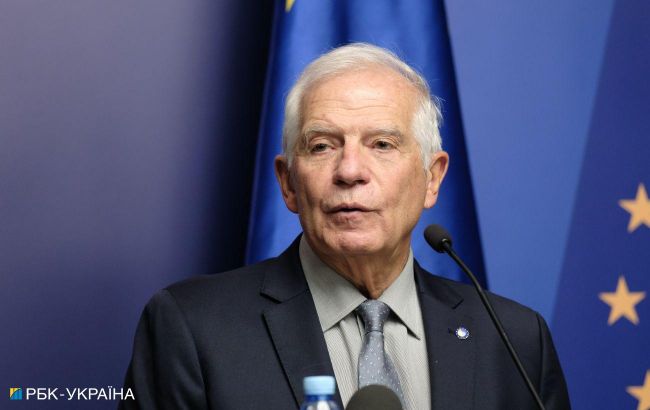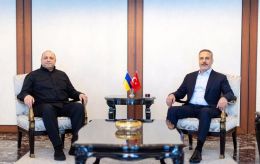Borrell reveals EU plan to extract revenue from frozen Russian assets
 Archival photo: head of EU diplomacy Josep Borrell (Vitalii Nosach, RBC-Ukraine).
Archival photo: head of EU diplomacy Josep Borrell (Vitalii Nosach, RBC-Ukraine).
The EU has devised a plan that will enable the extraction of extraordinary revenue from frozen Russian assets and allocate them to the needs of Ukraine, according to the head of EU diplomacy, Josep Borrell.
He mentioned that in the EU, assets of the Central Bank of Russia were frozen after the start of the war in Ukraine. Now, these assets are managed by central securities depositories and they generate extraordinary profits, as the interest rate has significantly increased.
According to Borrell, the EU has found a legal basis to extract these revenues and allocate them to the needs of Ukraine.
"We decided to pursue the goal of using these revenues for the support of Ukraine. In the first steps adopted by the Council in February, we introduced rules for the central securities depositories that generate these revenues to keep them aside, to identify them, and account for them separately," explained Borrell.
The revenues do not belong to Russia
Borrell clarified that these revenues are now in separate savings accounts. The EU expects this mechanism to provide about 3 billion euros a year.
"And in addition, we increase the legal certainty by making clear that these revenues do not belong to Russia, that they are not sovereign assets, but make clear difference between the capital and the revenues. I am talking about the revenues," he stated.
These funds should be used for Ukraine's military needs
Borrell reminded that he had previously proposed to the EU Council that these revenues be used to support Ukraine with military supplies through the European Peace Fund.
According to him, Ukraine urgently needs weapons and ammunition to protect itself and its people from Russian missiles, drones, bombs, and constant attacks. At the same time, he acknowledged that the EU had originally planned to use the revenues to support Ukraine's recovery and reconstruction.
Russian assets are planned to be used to help Ukraine
Since the beginning of the war in Ukraine, Western countries have managed to freeze more than $300 billion. However, they have not yet succeeded in confiscating these funds, as Western countries are concerned about legal and reputational consequences.
Treasury Secretary Janet Yellen recently said that the United States, together with other G7 countries, is exploring several options for transferring frozen Russian assets to Ukraine.
Vice President of the European Commission Valdis Dombrovskis said that the frozen assets of the Russian Federation in the amount of $300 billion could be used as collateral for loans to Ukraine.

